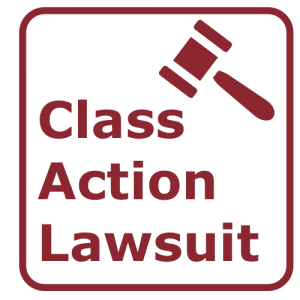Navigating Legal Waters: Understanding the Ins and Outs of Class Action Lawsuits
Wiki Article
Recognizing Class Activity Lawsuit: A Guide for Lawyers
Course action lawsuits have actually come to be an integral part of the legal landscape, enabling for the loan consolidation of numerous claims into a single action. For legal representatives, understanding the complexities of class action lawsuits is essential in effectively representing their customers. This thorough overview checks out the fundamentals of course activity suits, from identifying potential course members to navigating the certification process. In addition, it explores vital methods for handling class activity lawsuits and provides understandings into working out and obtaining authorization for settlements. By diving into the intricacies of course activity lawsuits, this overview gears up legal representatives with the expertise and devices needed to efficiently navigate this intricate location of legislation.The Essentials of Class Activity Suits
Course action suits are a lawful device used to settle similar claims from a group of individuals right into a solitary lawsuit, supplying a affordable and efficient method to looking for justice and resolution. This kind of suit allows a representative complainant, acting upon behalf of the entire course, to bring a case versus a defendant who has purportedly created harm or broke the legal rights of several people.The standard requirements for bringing a course activity lawsuit include numerosity, commonness, typicality, and competence of depiction. Numerosity describes the fact that the class need to be so huge that joinder of all participants would certainly be impractical. Commonness indicates that there have to be usual inquiries of legislation or reality that are shared by all members of the class. Typicality needs that the insurance claims of the representative complainant are typical of the claims of the whole course. Last but not least, competence of representation makes sure that the representative plaintiff will effectively represent the passions of the entire course.
Class activity suits can be advantageous for both accuseds and complainants. For defendants, it supplies the chance to efficiently solve several cases in a single legal action, avoiding the requirement to protect versus various private lawsuits.
Identifying and Assessing Prospective Course Participants
After developing the fundamental requirements for a class action lawsuit, the next action is to recognize and assess prospective class members. If they satisfy the needed standards., this procedure involves determining who may be part of the class and evaluating their insurance claims to figure out.To recognize possible course participants, legal representatives usually carry out extensive research and collect relevant information. This may involve evaluating files, carrying out meetings, and checking out documents to recognize people or entities that might have been influenced by the claimed misbehavior. It is vital to develop a detailed and clear list of possible course members to guarantee that all impacted events are consisted of in the suit.
When potential course participants have been identified, the following step is to assess their claims. This entails examining the advantages of each individual case to figure out if they satisfy the lawful demands for course accreditation. Lawyers must meticulously analyze the facts, proof, and legal concepts of each potential course participant's insurance claim to make certain that they have a feasible situation.
Assessing prospective course members likewise involves figuring out whether they meet the class interpretation and have actually experienced similar injury as a result of the accused's activities. This calls for contrasting the facts and scenarios of each prospective course member's situation to the accusations and lawful concepts placed forth in the lawsuit.
Browsing the Course Qualification Process
To effectively browse the class qualification procedure, lawyers should carefully abide by the step-by-step requirements stated by the court. Course qualification is a crucial action in a course activity legal action, as it establishes whether a case can proceed as a course action, representing a group of individuals who have similar claims versus an offender. The procedure entails pleasing particular standards, such as numerosity, commonness, typicality, and competence of depiction.First of all, legal representatives have to develop numerosity by demonstrating that the course is so large that individual joinder is impractical. This calls for a detailed analysis of the defenses and cases entailed.
Next, legal representatives need to show typicality, which indicates that the depictive plaintiff's cases are normal of the claims of the course members. This ensures that the passions of the representative complainant line up with the interests of the course. Finally, lawyers have to demonstrate competence of representation, meaning that the depictive plaintiff and their advice will fairly and adequately stand for the rate of interests of the course.
To browse this process efficiently, attorneys must completely prepare by performing comprehensive research study, gathering evidence, and establishing an engaging argument that satisfies each of these criteria. They have to also be prepared to react to any kind of obstacles or objections elevated by the defendant. By vigilantly click to find out more sticking to the procedural demands established forth by the court, lawyers can enhance their possibilities of acquiring course qualification and advancing the rate of interests of the course participants.

Trick Techniques for Taking Care Of Class Action Lawsuits
Upon successfully browsing the course certification procedure, legal representatives should after that implement crucial approaches for efficiently taking care of class activity lawsuits. These strategies are vital to ensure that the case continues efficiently and efficiently, eventually maximizing the chances of a positive outcome for the class members.
One secret approach is to establish a solid and natural legal team (Class action lawsuit). This entails assembling a team of attorneys with proficiency in class activity lawsuits, as well as other relevant areas such as the specific sector or topic included in the situation. A versatile group can bring various point of views and abilities to the table, boosting the total performance of the lawsuits
One more essential method is to establish a detailed and well-balanced litigation plan. This plan needs to lay out the total goals of the case, along with the particular lawful theories and debates that will be sought. It needs to additionally include a timeline and budget to guarantee that the situation remains on track and within the assigned resources.
Furthermore, lawyers should proactively involve with the class participants throughout the litigation process (Class action lawsuit). This consists of supplying routine updates on the progress of the instance, seeking input and feedback from the class participants, and resolving any type of inquiries or issues they might have. By promoting open communication and collaboration, lawyers can build depend on and support amongst the class participants, which can be instrumental in accomplishing an effective resolution
Resolving Class Activity Claims: Settlement and Approval
When it involves working out course action suits, effective arrangement and obtaining authorization are important actions in accomplishing a resolution. Class action legal actions are complex and include a lot of plaintiffs, making it critical to reach a negotiation that is reasonable and adequate to all parties entailed.
Once a settlement contract is gotten to, it needs to be accepted by the court. The court's duty in this procedure is to guarantee that the settlement is fair, affordable, and adequately safeguards the rate of interests of the course participants. The court will certainly take into consideration variables such as the nature of the claims, the toughness of the proof, the possible recuperation for the course participants, and any kind of arguments elevated by course participants.
Getting court authorization is vital as it gives finality to the negotiation and shields the passions of the course members. It guarantees that the settlement is binding and enforceable, and class participants can receive their rightful settlement.
Final Thought

Course action legal actions have become an indispensable component of the legal landscape, permitting for the debt read this consolidation of multiple cases right into a single activity. Class qualification is an essential step in a course activity legal action, as it establishes whether a situation can continue as a class activity, representing a team of individuals who have comparable insurance claims against an offender. By vigilantly sticking to the procedural needs established forth by the court, legal representatives can increase their possibilities of getting class qualification and progressing the rate of interests of the course members.
The court will take into consideration elements such as the nature of the cases, the stamina of the proof, the potential healing for the course participants, and anchor any objections elevated by class members.
By determining and assessing potential class participants, lawyers can identify the feasibility of a course action suit.
Report this wiki page